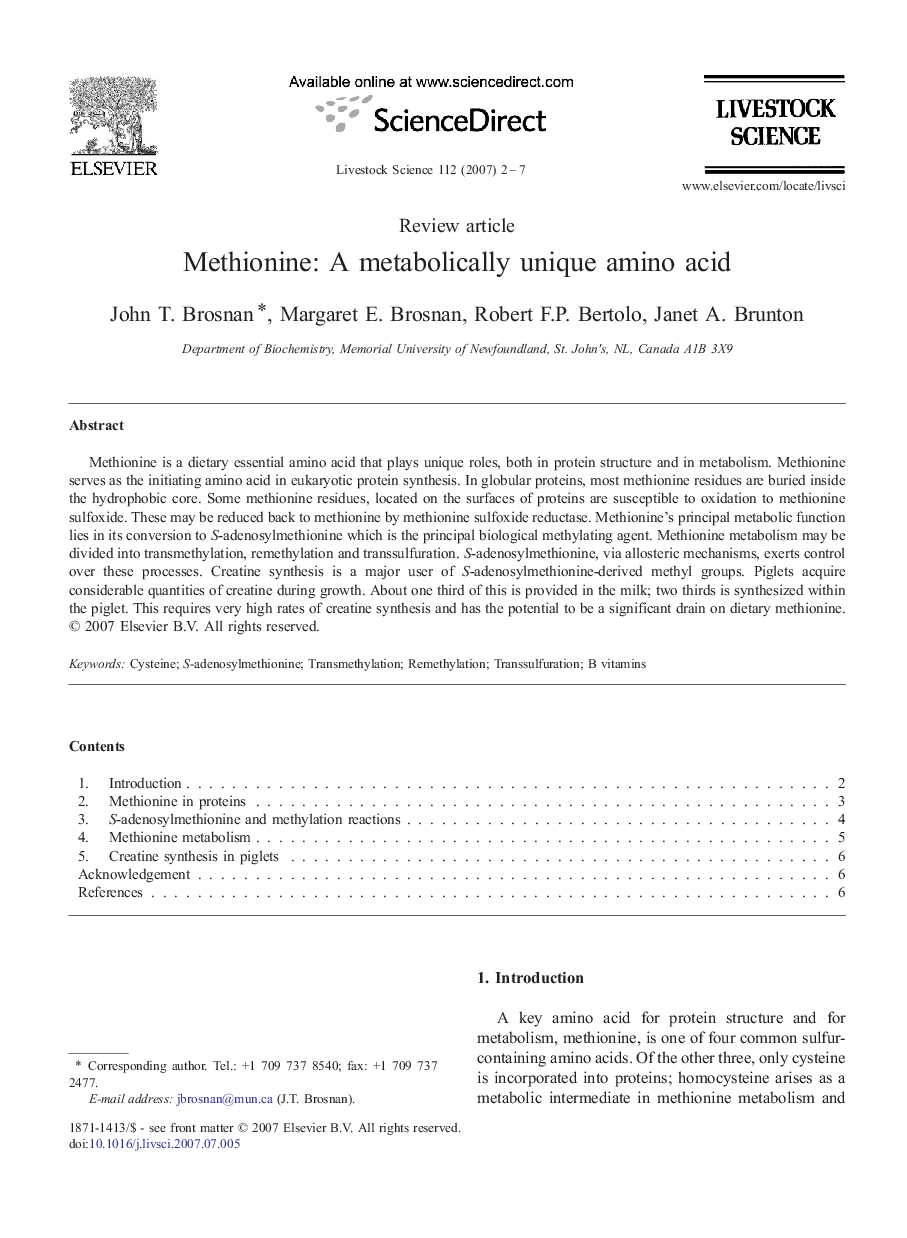| Article ID | Journal | Published Year | Pages | File Type |
|---|---|---|---|---|
| 2448580 | Livestock Science | 2007 | 6 Pages |
Methionine is a dietary essential amino acid that plays unique roles, both in protein structure and in metabolism. Methionine serves as the initiating amino acid in eukaryotic protein synthesis. In globular proteins, most methionine residues are buried inside the hydrophobic core. Some methionine residues, located on the surfaces of proteins are susceptible to oxidation to methionine sulfoxide. These may be reduced back to methionine by methionine sulfoxide reductase. Methionine's principal metabolic function lies in its conversion to S-adenosylmethionine which is the principal biological methylating agent. Methionine metabolism may be divided into transmethylation, remethylation and transsulfuration. S-adenosylmethionine, via allosteric mechanisms, exerts control over these processes. Creatine synthesis is a major user of S-adenosylmethionine-derived methyl groups. Piglets acquire considerable quantities of creatine during growth. About one third of this is provided in the milk; two thirds is synthesized within the piglet. This requires very high rates of creatine synthesis and has the potential to be a significant drain on dietary methionine.
